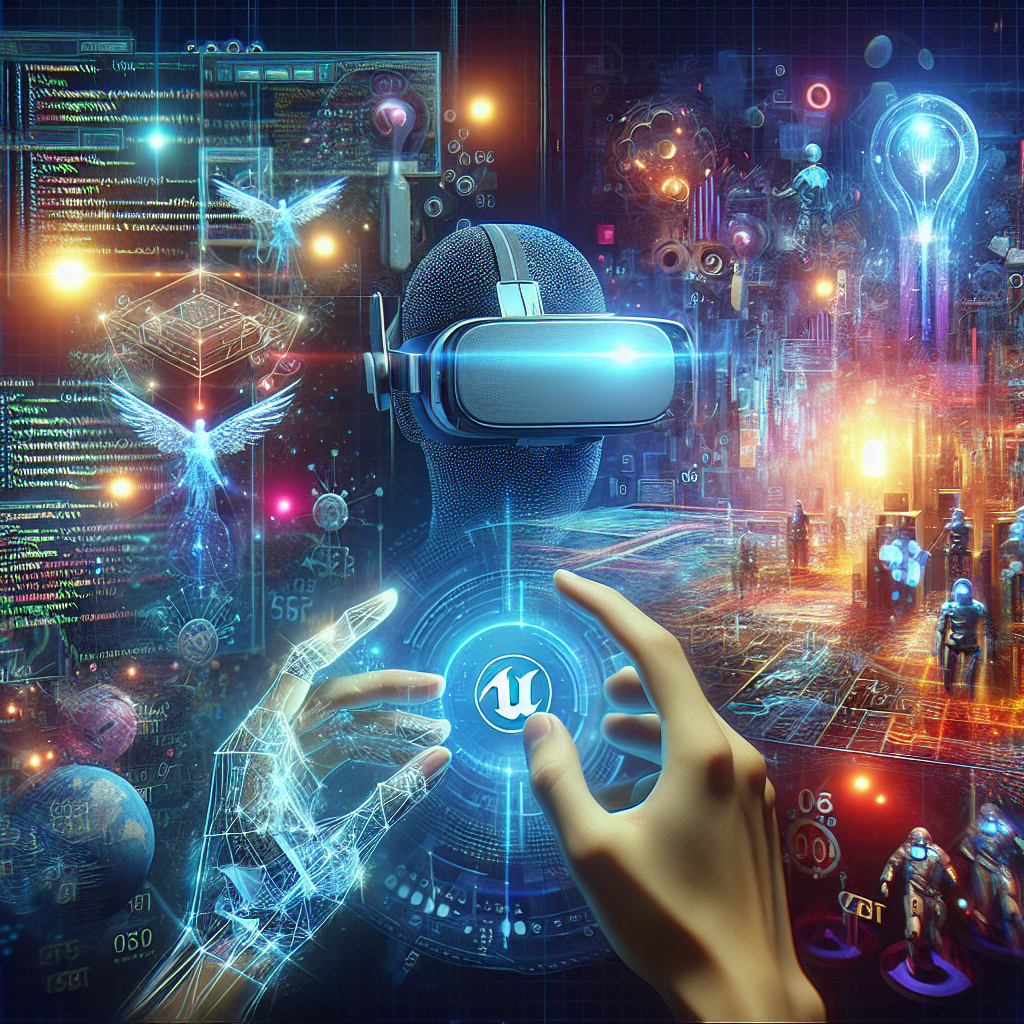VR and AR Development with Unreal Engine: Pushing the Boundaries of Gaming
The advent of Virtual Reality (VR) and Augmented Reality (AR) technologies has dramatically transformed the landscape of gaming and interactive experiences. As these technologies continue to evolve, developers are constantly seeking innovative ways to push the limits of what’s possible in virtual environments. Among the tools available, Unreal Engine stands out as a powerful, versatile game engine that is driving the evolution of VR and AR development.
The Rise of VR and AR in Gaming
VR and AR represent two distinct yet complementary approaches to interactive experiences. VR immerses players in an entirely virtual environment, allowing them to engage with digital worlds as if they were physically present. In contrast, AR enhances the real world by overlaying digital content onto it, creating a blended experience that augments reality with virtual elements.
The gaming industry has embraced both technologies, leading to a surge in VR and AR titles. From immersive experiences that transport players to fantastical realms to innovative mobile games that integrate real-world interaction, VR and AR have become pivotal components of modern gaming narratives.
Unreal Engine: A Game Changer in VR and AR Development
Unreal Engine, developed by Epic Games, has established itself as one of the leading platforms for creating high-quality interactive experiences. With its cutting-edge graphics capabilities, robust physics engine, and extensive toolset, Unreal Engine empowers developers to create compelling VR and AR applications. Here’s how it’s making waves in the industry:
1. High-Fidelity Graphics and Realism
One of the standout features of Unreal Engine is its ability to deliver stunning visuals. The engine’s advanced rendering capabilities allow developers to create realistic environments that enhance immersion in VR and AR applications. The inclusion of features like ray tracing enables dynamic lighting and reflections, thereby creating a lifelike experience that captivates users.
2. Blueprints Visual Scripting System
Unreal Engine’s Blueprints system simplifies the development process by allowing developers to use a visual scripting language. This feature is particularly beneficial for newcomers to game development, as it enables them to create complex game mechanics without extensive programming knowledge. For VR and AR experiences, where intuitive interaction is crucial, Blueprints facilitate rapid prototyping and iteration.
3. Cross-Platform Support and Scalability
Unreal Engine supports a wide range of platforms, including Oculus Rift, HTC Vive, PlayStation VR, and ARKit/ARCore for mobile AR. This flexibility allows developers to build experiences that can reach a broad audience. The engine’s scalability ensures that projects can be optimized for various devices, thus guaranteeing an accessible experience for players regardless of their hardware.
4. Performance Optimization Tools
To ensure smooth performance in VR and AR, where frame rates are critical, Unreal Engine offers a suite of performance optimization tools. Developers can utilize features like LOD (Level of Detail) management, occlusion culling, and simplified physics calculations to maintain high frame rates, making the user experience as seamless as possible.
5. Robust Community and Resources
Unreal Engine has cultivated a vast community of developers, artists, and enthusiasts. This community provides a wealth of shared knowledge through forums, tutorials, and resources that facilitate learning and problem-solving. Additionally, Epic Games routinely updates Unreal Engine, incorporating user feedback to further enhance its capabilities.
Challenges and Considerations in VR and AR Development
While Unreal Engine offers many advantages for VR and AR developers, there are still challenges to navigate. Developing for VR requires a deep understanding of immersion and interaction principles. Developers must consider motion sickness, user interfaces, and the physical space available for users.
Additionally, AR development often involves integrating real-world data and ensuring that virtual elements align correctly with physical environments. This requires thoughtful object tracking and environmental mapping, which can be demanding on resources.
The Future of VR and AR with Unreal Engine
As technology continues to advance, the potential for VR and AR in gaming and beyond is boundless. Unreal Engine is set to lead this charge, innovating in areas such as artificial intelligence, machine learning, and advanced physics simulations to create even more engaging and immersive experiences.
The gaming industry is just the tip of the iceberg. Applications extend beyond entertainment into education, training, architecture, and social interaction, thanks to the capabilities of VR and AR powered by Unreal Engine. The engine’s constant evolution and community support will undoubtedly play a pivotal role in shaping the future of these immersive technologies.
Conclusion
VR and AR development with Unreal Engine is pushing the boundaries of what gaming can be. As developers harness the engine’s powerful capabilities, they are able to craft experiences that not only captivate but also redefine our interaction with digital worlds. As this exciting field continues to grow, we can only anticipate more groundbreaking innovations that will change the way we play, learn, and experience our surroundings.




